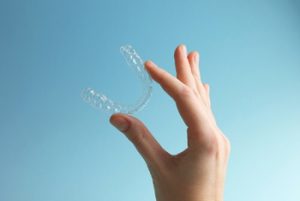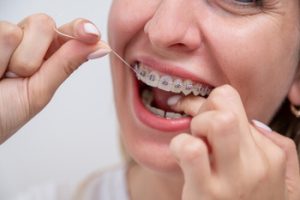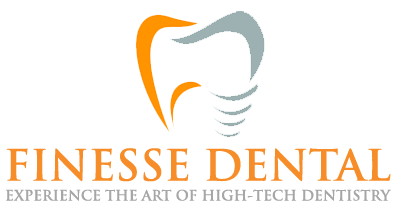Orthodontics is a specific discipline within dentistry that aims to diagnose, prevent, and treat dental and facial irregularities. This comprehensive guide will delve into what orthodontics entails, its benefits, and the various orthodontic treatment options available to help individuals achieve optimal oral health and aesthetics.
The Scope of Orthodontics
Definition and Historical Context
Orthodontics derives from the Greek words ‘ortho,’ meaning straight, and ‘odont,’ meaning tooth. As a dental specialty, orthodontics has evolved significantly from its early days when rudimentary metal bands were hammered onto teeth. Today, it integrates advanced technology to create precise and comfortable treatments designed to align the teeth and jaws effectively.
Goals of Orthodontic Treatment
The primary goal of orthodontic dental treatment is to correct misalignments within the mouth, including crooked teeth, overcrowded teeth, overbites, underbites, and other dental positioning issues. By addressing these, orthodontics not only enhances facial aesthetics but also improves oral functionality, making daily activities like eating and speaking more efficient and comfortable.
Components of Orthodontic Treatment
Diagnostic Tools
Effective orthodontic treatment begins with an accurate diagnosis. Dentists use a variety of tools to assess a patient’s oral structure, including digital X-rays, 3D imaging, and dental impressions. These tools help pinpoint the specific nature of the misalignment and form the basis for a customised treatment plan.
Common Orthodontic Appliances
Orthodontic appliances are integral to correcting misalignments:
- Traditional Metal Braces:
Comprising brackets and wires, these braces are the most common tools for adjusting teeth alignment.
- Ceramic Braces: These are similar to traditional braces but made from composite materials that blend with the teeth, making them less noticeable.
- Clear Aligners: These are removable trays that gradually move teeth into position and are popular among adults due to their subtle appearance.
- Retainers: These are used post-treatment to help maintain the position of straightened teeth.
The Orthodontic Treatment Process
Initial Consultation
The first step toward orthodontic treatment is a comprehensive consultation, where the dentist assesses the patient’s oral health and discusses potential treatment options. This session is crucial for setting realistic expectations and outlining the treatment course.
Active Treatment Phase
This phase involves the actual use of orthodontic appliances to move the teeth into their correct positions. Depending on the complexity of the misalignment, this phase can last anywhere from a few months to a few years. Regular check-ups are necessary to adjust the appliances and monitor progress.
Post-Treatment Care
After the active phase of treatment, retainers are usually required to ensure that the teeth do not revert to their original positions. Regular follow-up visits may be vital to check on the stability of the teeth and make any needed adjustments.
Benefits of Orthodontic Treatment
Improved Oral Health
Straight teeth are easier to clean, reducing the risk of plaque buildup, tooth decay, and gum disease. Properly aligned teeth and jaws also distribute biting pressure evenly, which helps prevent issues with the jaw joint and reduces wear on individual teeth.
Prevention of Bone Erosion
Misaligned teeth can lead to bone loss around the roots, a condition exacerbated by excessive force or pressure on certain teeth. Orthodontic treatments help distribute pressure evenly across all teeth, promoting healthier bone and gum support. This prevention of bone erosion is crucial for maintaining the jawbone’s integrity and ensuring the longevity of both natural teeth and any dental restorations.
Increased Comfort and Decreased Headaches
Often, misaligned teeth and an improper bite can lead to chronic headaches due to the stress on the jaw muscles. Orthodontic treatments realign the teeth and relieve this stress, often reducing or eliminating these headache episodes. Patients frequently report a significant decrease in discomfort following the correction of their bite, contributing to a better quality of life.
Enhanced Digestion

Improved Speech Clarity
Misalignments such as gaps in the teeth or improper jaw alignment can impact speech clarity. Orthodontic treatment can adjust the positioning of teeth and the jaw, which helps produce clearer speech and improve communication abilities. This is particularly beneficial for individuals whose misalignments cause noticeable speech impediments.
Enhanced Overall Well-being
Orthodontic treatment brings about significant psychological benefits. A straight, appealing smile can significantly boost self-esteem, improve social interactions, and lead to greater opportunities both personally and professionally. The confidence gained from an improved appearance is often life-changing, leading to increased social participation and a more positive outlook on life.
Long-Term Cost Savings
Choosing orthodontic treatment can result in substantial long-term savings on dental expenses. By aligning teeth and correcting the bite, orthodontics can minimise the need for future dental procedures. Misaligned teeth are prone to chipping and wear, potentially necessitating costly restorative treatments. Furthermore, aligned teeth reduce the risk of severe gum disease, which can be costly to manage and treat over time.
Orthodontic treatment offers a holistic approach not just to improving dental aesthetics but to enhancing a person’s overall health and well-being. If you’re considering this treatment, it’s an investment in much more than just your smile.
Who Needs Orthodontic Treatment?
Common Signs That You Might Need Orthodontic Treatment
Individuals might consider orthodontic treatment if they have crooked teeth, crowded teeth, gaps between teeth, or misaligned upper and lower teeth. Early signs that children might need orthodontic attention include difficulties in chewing or biting, mouth breathing, and speech impediments.
Age Groups
While many people associate orthodontic treatments with children and teenagers, adults too can benefit greatly from corrective orthodontic procedures. Advances in orthodontics have produced a range of discrete treatment options, such as lingual braces and clear aligners, that are particularly appealing to older patients.
Unlock Your Best Smile: Explore Orthodontic Treatment Today
Orthodontics is about much more than just straightening teeth; it embodies a comprehensive strategy to enhance dental function, health, and overall appearance. This field of dentistry tackles everything from misaligned teeth to correcting the alignment of the upper jaw, ensuring that every aspect of your bite contributes to a healthier oral environment.

Now is the perfect opportunity to take a step towards improving your dental health and aesthetics. If you or your loved ones are considering orthodontic treatment, don’t hesitate. Contact Finesse Dental today at (02) 8806 0790 to schedule a consultation with our experienced dentists. See how our individualised orthodontic treatments can make a difference in transforming your smile, boosting your confidence, and improving your quality of life.
Let us help you achieve the smile you’ve always dreamed of and ensure your oral health is as optimal as it can be.
References
https://www.sciencedirect.com/topics/medicine-and-dentistry/orthodontics
https://www.news-medical.net/health/What-is-Orthodontics.aspx


 Comprising brackets and wires, these braces are the most common tools for adjusting teeth alignment.
Comprising brackets and wires, these braces are the most common tools for adjusting teeth alignment.